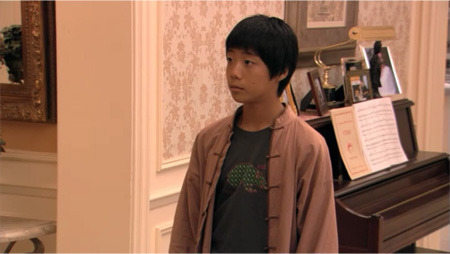Good evening Ladies and Gentlemen.
There comes a time when people at a technical conference like this need something more relaxing. A change of pace. A shift of style. To put aside all that work stuff and think of
something refreshingly different.
So let’s talk about coding theory. There are perhaps some of you here tonight who are not experts in coding theory, but rather have been dragged here kicking and screaming. So I
thought it would be a good idea if I gave you a sort of instant, five minute graduate course in coding theory.
Coding theorists are concerned with two things. Firstly and most importantly they are concerned with the private lives of two people called Alice and Bob. In theory papers, whenever a
coding theorist wants to describe a transaction between two parties he doesn’t call then A and B. No. For some longstanding traditional reason he calls them Alice and Bob.
Now there are hundreds of papers written about Alice and Bob. Over the years Alice and Bob have tried to defraud insurance companies, they’ve played poker for high stakes by mail, and
they’ve exchanged secret messages over tapped telephones.
If we put together all the little details from here and there, snippets from lots of papers, we get a fascinating picture of their lives. This may be the first time a definitive
biography of Alice and Bob has been given.
In papers written by American authors Bob is frequently selling stock to speculators. From the number of stock market deals Bob is involved in we infer that he is probably a
stockbroker. However from his concern about eavesdropping he is probably active in some subversive enterprise as well. And from the number of times Alice tries to buy stock from him
we infer she is probably a speculator. Alice is also concerned that her financial dealings with Bob are not brought to the attention of her husband. So Bob is a subversive stockbroker
and Alice is a two-timing speculator.
But Alice has a number of serious problems. She and Bob only get to talk by telephone or by electronic mail. In the country where they live the telephone service is very expensive.
And Alice and Bob are cheapskates. So the first thing Alice must do is MINIMIZE THE COST OF THE PHONE CALL.
The telephone is also very noisy. Often the interference is so bad that Alice and Bob can hardly hear each other. On top of that Alice and Bob have very powerful enemies. One of their
enemies is the Tax Authority. Another is the Secret Police. This is a pity, since their favorite topics of discussion are tax frauds and overthrowing the government.
These enemies have almost unlimited resources. They always listen in to telephone conversations between Alice and Bob. And these enemies are very sneaky. One of their favorite tricks
is to telephone Alice and pretend to be Bob.
Well, you think, so all Alice has to do is listen very carefully to be sure she recognizes Bob’s voice. But no. You see Alice has never met Bob. She has no idea what his voice sounds
like.
So you see Alice has a whole bunch of problems to face. Oh yes, and there is one more thing I forgot so say – Alice doesn’t trust Bob. We don’t know why she doesn’t trust him, but at
some time in the past there has been an incident.
Now most people in Alice’s position would give up. Not Alice. She has courage which can only be described as awesome. Against all odds, over a noisy telephone line, tapped by the tax
authorities and the secret police, Alice will happily attempt, with someone she doesn’t trust, whom she cannot hear clearly, and who is probably someone else, to fiddle her tax
returns and to organize a coup d’etat, while at the same time minimizing the cost of the phone call.
A coding theorist is someone who doesn’t think Alice is crazy.
…


